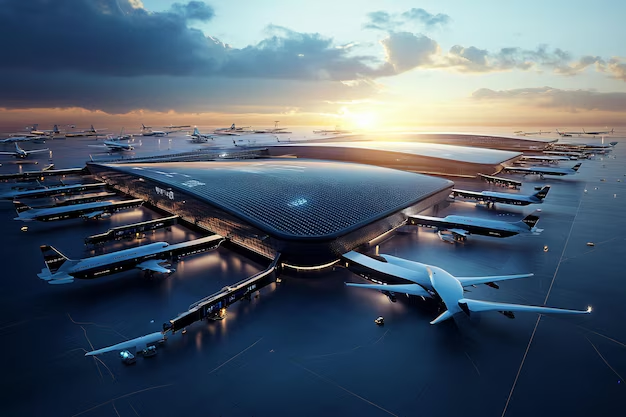Noida International Airport Poised to Revolutionise Air Travel in Delhi-NCR
As Noida International Airport (NIA) edges closer to its operational debut, CEO Christoph Schnellmann has shared key insights into its vision and plans for transforming air travel in Delhi-NCR and Western Uttar Pradesh. In an exclusive interview, Schnellmann outlined the airport’s ambitious development strategy, which includes its role as a critical stop on the forthcoming Delhi-Varanasi high-speed rail corridor, significantly enhancing its connectivity to both regional and global destinations.
The first phase of Noida International Airport’s development will feature a single runway and terminal, with an expected capacity of 12 million passengers annually. However, once all four phases of development are completed, the airport will have the potential to handle a staggering 70 million passengers per year, positioning it as a major air travel hub for the region. The airport’s strategic location, near the Yamuna Expressway, provides excellent road access to Delhi NCR, Noida, and key locations in Western Uttar Pradesh, with travel times as short as 25 minutes to Greater Noida and just 45 minutes to central Delhi. Additionally, the integration of high-speed rail connections, including a proposed stop on the Delhi-Varanasi corridor, is set to enhance NIA’s status as a central transportation nexus. Schnellmann highlighted that Noida International Airport is already in talks with major airlines, with IndiGo confirmed as the launch carrier for the airport. Akasa Air has also been onboarded, with plans to operate both domestic and international routes. Several Middle Eastern and Southeast Asian airlines have expressed strong interest in establishing connections from NIA, marking the airport as an emerging international gateway. Meanwhile, the airport’s cargo operations are also progressing, with a dedicated Multi-Modal Cargo Hub (MMCH) being developed by Air India SATS. Once complete, the hub will have a capacity of 200,000 tonnes annually, expanding to 2 million tonnes in later phases. This facility will serve as a vital logistical link for businesses in the NCR and Uttar Pradesh, bolstering the region’s commercial capabilities.
In addition to air connectivity, Noida International Airport is investing heavily in last-mile connectivity for passengers. The airport will offer a variety of transport options, including buses, shuttles, taxis, and electric ride-sharing services, ensuring that passengers can reach the airport with ease from surrounding regions. A premium all-electric taxi service is also in the works, in partnership with Mahindra Logistics Mobility, adding to the airport’s commitment to sustainability. As for environmental responsibility, Schnellmann revealed that the airport is being built with a strong focus on sustainability. Over 580 trees have been transplanted, and the airport will feature more than 133 hectares of green space. The design also incorporates passive measures such as natural lighting and ventilation to reduce energy consumption, alongside innovative technologies like solar and wind energy, rainwater harvesting, and electric ground support equipment. These eco-friendly initiatives reflect NIA’s commitment to minimising its environmental impact while providing world-class infrastructure. Noida International Airport’s ambitious plans and innovative designs are aimed at not only providing a seamless travel experience but also supporting economic growth and sustainable development in the region. With its expected opening in April 2025, the airport is poised to become a cornerstone of Delhi-NCR’s transportation landscape, offering enhanced connectivity, advanced amenities, and a green footprint.




